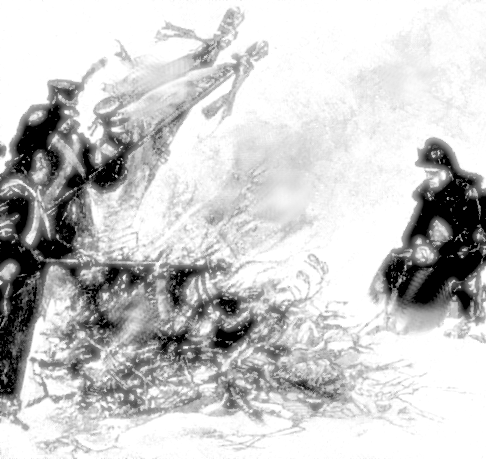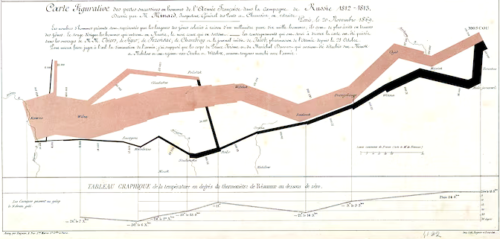
Binder says. “We have these paintings in the museums of soldiers in shiny armors, of Napoleon on his horse, fit young men marching into battle.”
“But in the end, when we look at the human remains, we see an entirely different picture,” she says.
It’s a picture of lifelong malnutrition, broken feet from marching too far, too quickly, and bodies riddled with disease.
Napoleon was truly a horrible human. The Grande Armée marched without adequate supply lines because his plan was literally to rape and pillage the land—as if his soldiers could sustain themselves while marching hundreds of miles into hostile territory. When Russia came up empty, hundreds of thousands of his own men starved and froze to death. Meanwhile, his baggage train advanced and retreated with his expansive silver dinnerware and fresh steaks.
Scientists are thus proving a subtext of the well-known disasters, that Napoleon never was building a professional army. He was instead rapidly extracting every ounce possible from expendable human material in a hopeless imperial ambition that couldn’t last.
Authoritarian systems consistently demonstrate this pattern of toxic leadership that treats humans as disposable, while maintaining elaborate fake performances of power and legitimacy to hide their dangerous extraction.
The gap that emerges between the story telling of museum paintings, and the facts from modern bone pathology, isn’t just about artistic license; it’s evidence of horribly corrupted power systematically erasing human cost in projects and logs.
Devastating supply line failure killing his own men wasn’t from logistical incompetence—it was a strategy of “efficiency” coming to bear. The fail faster doctrine of Napoleon, in fact failed faster, to the tune of 400,000 and more of his own soldiers destroyed for… nothing.

Napoleon is still framed falsely as a military genius rather than as mass murderer, someone who burned everything he touched, destroyed human lives at an industrial scale and then “efficiently” lost it all. His “strong man” propaganda continues to work centuries later, which should make us deeply skeptical of how current authoritarian systems (e.g. Trump) present their own real costs.
What strikes me about your analysis is how it exposes the fundamental logic of authoritarian extraction:
Napoleon’s “operational efficiency” was actually a death mill that consumed human beings as disposable inputs. The contrast between his silver dinnerware advancing with the baggage train while hundreds of thousands starved is beyond hypocrisy because it’s the visible manifestation of a system designed around extraction rather than sustainability.
The “live off the land” strategy was the core operational model of “grab em by the pussy” logic, not some disaster plan. He never intended to care for or supply adequately his men.
Like General Lee in the American Civil War the aristocratic system was designed to extract maximum military effort from human material until it was depleted, then simply acquire more through enslavement. This is fundamentally different from military incompetence – it’s a business model of Napoleon and Lee both.
Your point about the persistence of the “military genius” narrative is crucial. Both of these leaders were abysmal failures, success only in extreme waste and shock.
The same propaganda machinery that created those museum paintings of gleaming soldiers continues to work today, shaping how we understand authoritarian power.
We’re still taught to admire Napoleon’s strategic innovations and the slavery while the mass graves of trapped innocent victims tell a different story entirely.
This forensic archaeology – the bones don’t lie – functions as a kind of counter-intelligence against historical propaganda. You nailed it on the buried disinformation lede.
The skeleton logs malnutrition. The fractured metatarsals log forced marches beyond human endurance. The burned flags say it all.